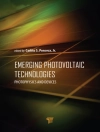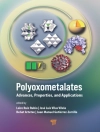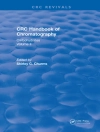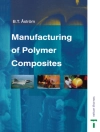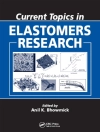While there are many publications on the topic written by experts for experts, this text is specifically designed to allow advanced students and researchers with no background in physics to comprehend novel fluorescence microscopy techniques.
This second edition features new chapters and a subsequent focus on super-resolution and single-molecule microscopy as well as an expanded introduction. Each chapter is written by a renowned expert in the field, and has been thoroughly revised to reflect the developments in recent years.
विषयसूची
List of Contributors xv
Preface xix
1 Introduction to Optics 1
Rainer Heintzmann and Ulrich Kubitscheck
1.1 A Short History of Theories about Light 1
1.2 Properties of Light Waves 2
1.3 Four Effects of Interference 7
1.4 Optical Elements 13
1.5 Optical Aberrations 20
2 Principles of Light Microscopy 23
Ulrich Kubitscheck
2.1 Introduction 23
2.2 Construction of Light Microscopes 23
2.3 Wave Optics and Resolution 32
2.4 Apertures, Pupils, and Telecentricity 50
2.5 Microscope Objectives 53
2.6 Contrast 67
2.7 Summary 82
3 Fluorescence Microscopy 85
Jurek W. Dobrucki and Ulrich Kubitscheck
3.1 Contrast in Optical Microscopy 85
3.2 Physical Foundations of Fluorescence 86
3.3 Features of Fluorescence Microscopy 90
3.4 A Fluorescence Microscope 95
3.5 Types of Noise in a Digital Microscopy Image 114
3.6 Quantitative Fluorescence Microscopy 119
3.7 Limitations of Fluorescence Microscopy 124
3.8 Summary and Outlook 128
4 Fluorescence Labeling 133
Gerd Ulrich Nienhaus and Karin Nienhaus
4.1 Introduction 133
4.2 Key Properties of Fluorescent Labels 133
4.3 Synthetic Fluorophores 138
4.4 Genetically Encoded Labels 149
4.5 Label Selection for Particular Applications 155
5 Confocal Microscopy 165
Nikolaus Naredi-Rainer, Jens Prescher, Achim Hartschuh, and Don C. Lamb
5.1 Evolution and Limits of Conventional Widefield Microscopy 165
5.2 Theory of Confocal Microscopy 166
5.3 Applications of Confocal Microscopy 186
6 Two-Photon Excitation Microscopy for Three-Dimensional Imaging of Living Intact Tissues 203
David W. Piston
6.1 Introduction 203
6.2 What is Two-Photon Excitation? 205
6.3 How Does Two-Photon Excitation Microscopy Work in Practice? 211
6.4 Instrumentation 216
6.5 Limitations of Two-Photon Excitation Microscopy 222
6.6 When is 2PMthe Best Option? 229
6.7 Applications of Two-Photon Microscopy 231
6.8 Other Nonlinear Microscopies 239
6.9 Future Outlook for 2PM 240
7 Light Sheet Microscopy 243
Gopi Shah, Michael Weber, and Jan Huisken
7.1 Principle of Light Sheet Microscopy 244
7.2 Light Sheet Microscopy: Key Advantages 245
7.3 Construction and Working of a Light Sheet Microscope 246
7.4 Theory of Light Sheet Microscopy 247
7.5 Light Sheet Interaction with Tissue 251
7.6 3D Imaging 253
7.7 Multiview Imaging 255
7.8 Different Lens Configurations 257
7.9 Sample Mounting 258
7.10 Recent Advances in Light Sheet Microscopy 259
7.11 Outlook 260
8 Localization-Based Super-Resolution Microscopy 267
Markus Sauer and Mike Heilemann
8.1 Super-Resolution Microscopy: An Introduction 267
8.2 The Principle of Single-Molecule Localization Microscopy 269
8.3 Photoactivatable and Photoconvertible Probes 272
8.4 Intrinsically Photoswitchable Probes 272
8.5 Photoswitching of Organic Fluorophores by Chemical Reactions 273
8.6 Experimental Setup for Localization Microscopy 273
8.7 Optical Resolution and Imaging Artifacts 276
8.8 Fluorescence Labeling for Super-Resolution Microscopy 278
8.9 Measures for Improving Imaging Contrast 283
8.10 SMLM Software 283
8.11 Reference Structures for SMLM 285
8.12 Quantification of SMLM Data 286
9 Super-Resolution Microscopy: Interference and Pattern Techniques 291
Udo Birk, Gerrit Best, Roman Amberger, and Christoph Cremer
9.1 Introduction 291
9.2 Structured Illumination Microscopy (SIM) 293
9.3 Spatially Modulated Illumination (SMI) Microscopy 307
9.4 Application of Patterned Techniques 313
10 STEDMicroscopy 321
Travis J. Gould, Lena K. Schroeder, Patrina A. Pellett, and Joerg Bewersdorf
10.1 Introduction 321
10.2 The Concepts behind STED Microscopy 322
10.3 Experimental Setup 330
10.4 Applications 334
11 Fluorescence Photobleaching Techniques 339
Reiner Peters
11.1 Introduction 339
11.2 Basic Concepts and Procedures 340
11.3 Fluorescence Recovery after Photobleaching (FRAP) 345
11.4 Continuous Fluorescence Microphotolysis (CFM) 352
11.5 CLSM-Assisted Photobleaching Methods 356
12 Single-Molecule Microscopy in the Life Sciences 365
Markus Axmann, Josef Madl, and Gerhard J. Schütz
12.1 Encircling the Problem 365
12.2 What is the Unique Information? 367
12.3 Building a Single-Molecule Microscope 372
12.4 Analyzing Single-Molecule Signals: Position, Orientation, Color, and Brightness 387
12.5 Learning from Single-Molecule Signals 394
13 Förster Resonance Energy Transfer and Fluorescence Lifetime Imaging 405
Fred S.Wouters
13.1 General Introduction 405
13.2 Förster Resonance Energy Transfer 406
13.3 Measuring FRET 426
13.4 FLIM 439
13.5 Analysis and Pitfalls 444
A Appendix A:What Exactly is a Digital Image? 453
Ulrich Kubitscheck
A.1 Introduction 453
A.2 Digital Images as Matrices 453
A.3 Look-up Table 457
A.4 Intensity Histograms 457
A.5 Image Processing 458
A.6 Pitfalls 460
B Appendix B: Practical Guide to Optical Alignment 463
Rainer Heintzmann
B.1 How to Obtain a Widened Parallel Laser Beam? 463
B.2 Mirror Alignment 465
B.3 Lens Alignment 466
B.4 Autocollimation Telescope 466
B.5 Aligning a Single Lens Using a Laser Beam 466
B.6 How to Find the Focal Plane of a Lens? 469
B.7 How to Focus to the Back Focal Plane of an Objective Lens? 470
Index 473
लेखक के बारे में
Ulrich Kubitscheck is the department head of Biophysical Chemistry at the Institute of Physical and Theoretical Chemistry at the University of Bonn, Germany. Having obtained his academic degrees from the University of Bremen, Germany, he spent his career working at The Weizmann Institute of Science and the Institute of Medical Physics and Biophysics of the University of Munster, Germany, before taking up his present appointment at the University of Bonn. Professor Kubitscheck develops single molecule and light sheet imaging techniques, has authored over 80 scientific publications and has extensive experience in teaching courses on physical chemistry, biophysics and quantitative microscopy.


